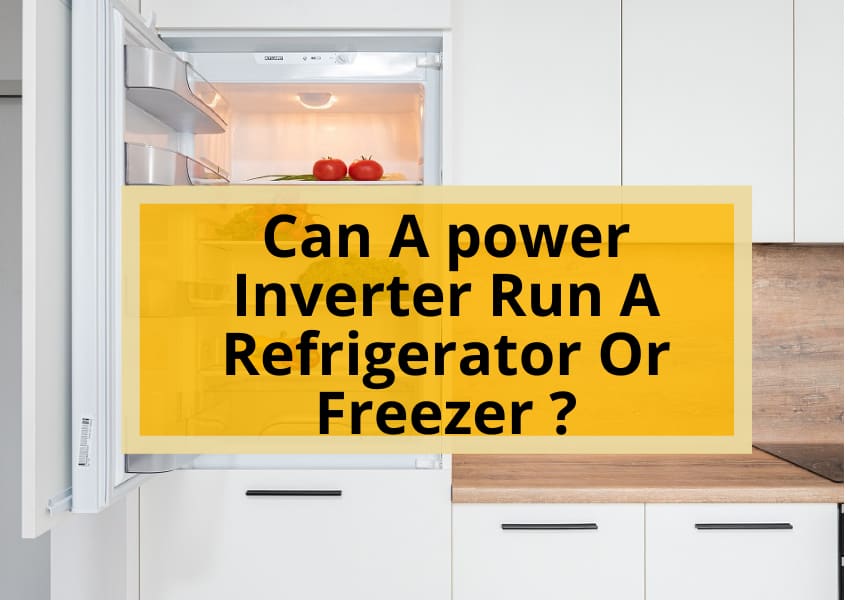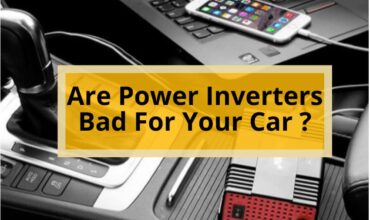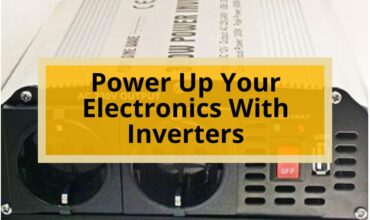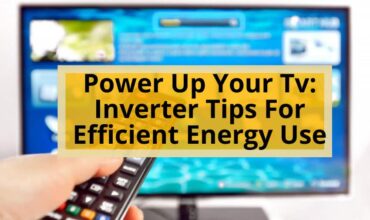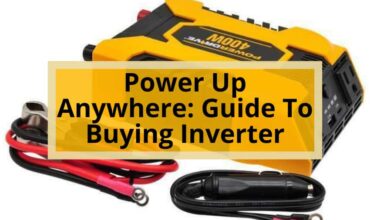Yes, a power inverter can run a refrigerator or freezer. However, it is important to consider the power requirements of the appliance and choose an inverter that can handle the load.
Refrigerators and freezers typically require a high surge of power to start up, so it is recommended to use a pure sine wave inverter with sufficient wattage to handle the initial surge and continuous power needs of the appliance.
In this article, we will delve into the technical aspects, consider different power sources, and discuss which type of inverter is best suited for your needs.
Understanding The Needs of a Refrigerator or Freezer
When considering whether a power inverter can run a refrigerator or freezer, there are several key points to take into account.
First, you need to determine the running wattage requirements of your appliance, as this will determine the size and capacity of the inverter needed.
Additionally, it is crucial to consider the surge of power needed at start-up.
Moreover, you should ensure that the input voltage of the inverter matches the voltage required by your appliance, and consider the output waveform to ensure compatibility.
Running Wattage Requirements or Continuous Power Requirement
To run a refrigerator or freezer with a power inverter, you’ll need to consider the running wattage requirements or the continuous power requirement. These requirements determine the amount of power needed to keep your appliance running smoothly and continuously without any interruptions.
To determine the running wattage, you can refer to the appliance’s label or manual. It will usually provide you with the wattage rating. Once you have this information, you can choose a power inverter that can handle the required wattage.
It is important to select an inverter that has a higher wattage capacity than the appliance’s running wattage so that it can handle any power surges or fluctuations.
Surge Of Power Needed at Start-Up
You need to be aware of the surge in power needed when starting up your appliances. When you turn on your refrigerator or freezer, they require a sudden surge of power to start their motors. This surge can be significantly higher than the continuous power requirement of the appliance.
For example, a refrigerator may require 800 watts of continuous power to run, but it may need up to 1200 watts of power during start-up. This surge in power is necessary to overcome the inertia of the motor and get the appliance running smoothly.
It is important to consider this surge when choosing a power inverter for your refrigerator or freezer. Make sure the inverter you select can handle the starting surge without overloading or damaging the appliance.
Input Voltage (Volts)
Most refrigerators and freezers require a stable input voltage of around 120 volts to operate efficiently. If the input voltage drops too low or goes above the recommended range, it can cause damage to the appliance and potentially shorten its lifespan.
Therefore, it is important to ensure that the power inverter you choose can provide a stable input voltage within the required range for your refrigerator or freezer. This will not only ensure the proper functioning of your appliance but also contribute to its longevity, allowing you to enjoy its benefits for a longer period of time.
Factors To Consider When Choosing an Inverter for Your Refrigerator or Freezer
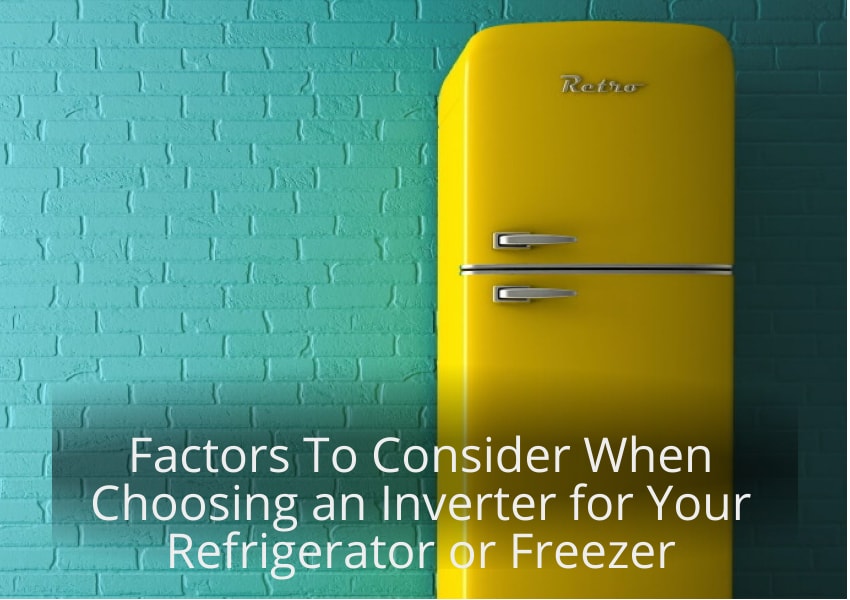
When choosing an inverter for your refrigerator or freezer, there are several factors to consider.
Firstly, you need to determine the size of the inverter needed based on the power requirements of your appliance and the output waveform produced by the inverter.
Secondly, you should evaluate the battery bank capacity needed to run the refrigerator or freezer for extended periods of time during power outages.
Lastly, it is crucial to identify the energy source that will power the inverter, whether it be a generator, solar panels, or grid electricity.
Size Of Inverter Needed
If you want to run a refrigerator or freezer with a power inverter, you’ll need to consider the size of the inverter you’ll need. The size of the inverter is crucial in ensuring that your refrigerator or freezer operates efficiently and without any issues.
The Output Waveform
The output waveform refers to the shape of the electrical signal produced by the inverter.
There are three main types of output waveforms: pure sine wave, modified sine wave, and square wave.
The pure sine wave is the most desirable waveform for running sensitive appliances, such as refrigerators and freezers. It delivers a smooth and consistent flow of power, mimicking the waveform of utility power. This ensures that your appliances receive clean and stable power, preventing any potential damage or malfunctions.
On the other hand, modified sine wave and square wave inverters produce a less refined output waveform. While they can still power basic appliances, they may cause issues with more sensitive devices. Refrigerators and freezers, being complex appliances with sensitive electronics, are best operated with a pure sine wave inverter.
Battery Bank Capacity Needed to Run for Extended Periods
You need to determine the capacity of your battery bank in order to run your appliances for extended periods of time. To do this, you must consider the power requirements of your refrigerator or freezer and calculate how long you need it to run without access to external power sources.
Start by identifying the power consumption of your appliance, which is usually measured in watts. Next, multiply this value by the number of hours you want your battery bank to run the appliance. This will give you the total energy requirement in watt-hours.
To ensure adequate capacity, it is recommended to add a safety margin of around 20% to account for any inefficiencies or unexpected power surges.
Energy Source for Powering the Inverter
To ensure a steady flow of electricity, it’s important to choose a reliable energy source for powering the inverter. When selecting an energy source, you need to consider factors such as availability, efficiency, and cost.
One option is to connect the inverter to the electrical grid, which provides a constant and reliable power supply. This is particularly beneficial if you live in an area with a stable grid infrastructure.
Another option is to use renewable energy sources, such as solar panels or wind turbines. These sources are environmentally friendly and can provide a sustainable power supply. However, they may require additional equipment and maintenance.
Additionally, you can also use a generator as an energy source. Generators are versatile and can provide power in remote locations or during power outages. However, they require fuel and regular maintenance.
Choosing the right energy source for your inverter will ensure that you have a reliable and uninterrupted power supply for your appliances, including refrigerators and freezers.
Types Of Power Sources Compatible with An Inverter to Run a Refrigerator or Freezer
When considering power sources for running a refrigerator or freezer with an inverter, there are several key options to explore.
One such option is solar power, where energy is harnessed from the sun and converted into electricity.
Another option is a lead-acid battery, which stores electrical energy and can be used as a reliable power source.
Additionally, both direct current (DC) and alternating current (AC) sources can be utilized. DC sources provide a continuous flow of electricity, while AC sources deliver electricity that periodically changes direction.
Solar Power
If you have a solar power system, a power inverter can run your refrigerator or freezer. Solar power is a renewable energy source that harnesses the sun’s energy and converts it into electricity.
When sunlight hits the solar panels, it generates direct current (DC) electricity. However, most household appliances, including refrigerators and freezers, require alternating current (AC) electricity to function. This is where the power inverter comes in.
The inverter converts the DC electricity produced by the solar panels into AC electricity that can power your appliances. It ensures that the electricity flowing to your refrigerator or freezer is compatible with its requirements.
Lead-Acid Battery
Now that we have discussed solar power, let’s dive into the next piece of the puzzle: the lead-acid battery. You may be wondering how this type of battery fits into the equation of running a refrigerator or freezer with a power inverter. Well, let me explain.
A lead-acid battery is a rechargeable battery commonly used in solar power systems. It’s known for its ability to provide a high amount of current in a short period of time, making it suitable for powering appliances like refrigerators or freezers. When connected to a power inverter, the battery converts its stored energy into AC power, which can then be used to run your appliance.
Belonging to a community of solar power enthusiasts, it’s important to understand the role of a lead-acid battery and its compatibility with power inverters. With this knowledge, you can confidently build your own solar power system and enjoy the benefits of a self-sustaining energy source.
Direct Current (DC) Source
The lead-acid battery is commonly used in solar power systems and is capable of providing a high amount of current in a short period of time.
If you want to power a refrigerator or freezer using a direct current (DC) source, such as a lead-acid battery, you must consider several factors.
First, you need to determine the power requirements of your refrigerator or freezer, including the startup power surge. This information can usually be found on the appliance’s label or in the user manual.
Next, you should check the amp-hour (Ah) rating of your battery to ensure it can handle the load. Keep in mind that running a refrigerator or freezer continuously can drain the battery quickly, so it’s important to have a sufficient battery capacity and a means of recharging it, such as solar panels or a generator.
Additionally, you may need to use an inverter to convert the DC power from the battery to alternating current (AC) for the appliance.
Alternating Current (Ac) Source
When using an AC source, it is important to consider the voltage requirements of your appliances. You should ensure that the power source can handle the load. AC power is the most common type of electricity used in homes and buildings. It is characterized by a constantly changing current that alternates direction.
AC power is provided by utility companies and is distributed through power lines to our homes. To determine if a power inverter can run a refrigerator or freezer, you need to check the voltage and power requirements of the appliance. Most refrigerators and freezers operate on standard household voltage, which is typically 120 volts. However, some larger appliances may require higher voltages.
It is important to choose an inverter that can provide the necessary voltage and power output to run your refrigerator or freezer efficiently and safely.
Modified vs. Pure Sine which one do you need to run a Refrigerator Or Freezer?
You’ll need to determine whether a modified or pure sine power inverter can run a refrigerator or freezer. The type of power inverter you choose will depend on the specific requirements of your appliance.
A modified sine power inverter is a more cost-effective option, but it may not be suitable for all appliances, particularly those with sensitive electronics.
A pure sine power inverter, on the other hand, produces a cleaner and more stable power output, which is essential for running appliances like refrigerators and freezers. It ensures that the compressor and other components receive a consistent and reliable power supply, minimizing the risk of damage or malfunction.
Therefore, if you want to ensure the longevity and optimal performance of your refrigerator or freezer, it is recommended to invest in a pure sine power inverter.
Frequently Asked Questions
How Long Can a Power Inverter Run a Refrigerator or Freezer on a Fully Charged Battery?
On a fully charged battery, a power inverter can run a refrigerator or freezer for a specific amount of time. The duration depends on factors like the power rating of the inverter and the energy consumption of the appliance.
Can a Power Inverter Run Multiple Refrigerators or Freezers Simultaneously?
Yes, a power inverter can run multiple refrigerators or freezers simultaneously. However, it’s important to consider the power rating of the inverter and the total power consumption of the appliances to avoid overloading the system.
Are There Any Additional Accessories or Equipment Required to Connect a Power Inverter to a Refrigerator or Freezer?
To connect a power inverter to a refrigerator or freezer, you’ll need additional accessories. Make sure to have the correct cables, connectors, and fuses to ensure a secure and efficient connection.
Can a Power Inverter Handle Power Surges or Fluctuations That May Occur During the Operation of a Refrigerator or Freezer?
Yes, a power inverter can handle power surges or fluctuations that may occur during the operation of a refrigerator or freezer. It is designed to provide a stable and consistent power supply for your appliances.
Are There Any Specific Safety Precautions or Guidelines to Follow When Using a Power Inverter to Run a Refrigerator or Freezer?
Yes, there are specific safety precautions to follow when using a power inverter to run a refrigerator or freezer. It is important to ensure proper grounding and use a surge protector to protect your appliance from power surges.
Conclusion
In conclusion, running a refrigerator or freezer with a power inverter is indeed possible. However, it is crucial to understand the specific power needs of your appliance and choose an inverter accordingly.
Factors like wattage, surge capacity, and power source compatibility should be considered when making your selection. Additionally, the type of inverter, whether modified or pure sine, will also impact the performance of your appliance.
So, choose wisely to ensure a smooth and efficient operation, like a well-oiled machine humming along.
